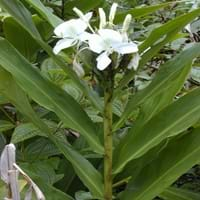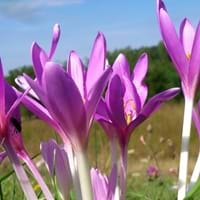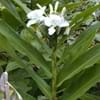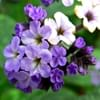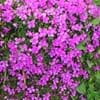Life Span
Perennial
Perennial
Type
Tender Perennial
Bulb or Corm or Tuber
Origin
Southern Asia, Southeastern Asia, India, Nepal, China
Mediterranean, Turkey
Types
Orange bottlebrush ginger, Kahili ginger, Cream garland-lily
Not available
Habitat
Forest edges, Moist Soils, Riverbanks, Swamps, Wet lands
Lawn, meadows, Sunny Edge, Woodland Garden
USDA Hardiness Zone
7-15
6-9
Sunset Zone
H1, H2, 8, 9, 14, 15, 16, 17, 19, 20, 21, 22, 23, 24
21,22
Habit
Upright/Erect
Clump-Forming
Flower Color
White, Yellow
Fuchsia, Rose
Flower Color Modifier
Bicolor
Bicolor
Fruit Color
Red, Orange
Not Available
Leaf Color in Spring
Green, Light Green
Green
Leaf Color in Summer
Green, Dark Green
Light Green
Leaf Color in Fall
Green, Dark Green
Several shades of Green
Leaf Color in Winter
Light Green
Light Green
Leaf Shape
Pinnate
Long Broad
Plant Season
Spring, Summer, Fall
Spring, Fall
Sunlight
Partial Sun, Partial shade
Full Sun, Partial Sun
The pH of Soil
Acidic, Neutral
Acidic, Neutral
Soil Drainage
Average
Well drained
Bloom Time
Late Spring, Early Summer, Summer, Late Summer
Late Summer, Early Fall
Tolerances
Drought
Drought
Where to Plant?
Container, Ground
Container, Ground, Pot
How to Plant?
Divison, Seedlings
Corms or bulbs, Seedlings
Plant Maintenance
Medium
Low
Watering Requirements
Average Water Needs, Requires consistently moist soil, Water Deeply
Do Not over Water, Keep the ground moist but not water-logged
In Summer
Lots of watering
Lots of watering
In Spring
Moderate
Moderate
In Winter
Average Water
Average Water
Soil pH
Acidic, Neutral
Acidic, Neutral
Soil Drainage Capacity
Average
Well drained
Sun Exposure
Partial Sun, Partial shade
Full Sun, Partial Sun
Pruning
Remove damaged leaves, Remove dead branches, Remove dead leaves, Remove dead or diseased plant parts
Cut or pinch the stems, Remove damaged leaves, Remove dead flowers, Remove dead leaves
Fertilizers
All-Purpose Liquid Fertilizer, Fertilize every week
All-Purpose Liquid Fertilizer, fertilize in summer
Pests and Diseases
Red blotch
Slugs
Plant Tolerance
Drought
Drought
Flower Petal Number
Single
Single
Fragrant Bark/Stem
Yes
No
Foliage Texture
Bold
Coarse
Foliage Sheen
Matte
Not Available
Attracts
Ants, Butterflies, Hummingbirds
Bees, Butterflies
Allergy
Not Available
poisonous if ingested, Toxic if not prepared properly
Aesthetic Uses
Showy Purposes
Beautification, Cottage Garden, Showy Purposes
Beauty Benefits
Not Available
Removes pimples
Environmental Uses
Air purification
Air purification
Medicinal Uses
Abdominal Disease, Anthelmintic, Antirheumatic, Carminative, Chest pain, Febrifuge, Joint pain, Stomachic, Tonic, Tonsillitis
Arthritis, Gout, Itching
Part of Plant Used
Flowers, Root, Seeds, Stem
Bulbs, Flowers, Seeds
Other Uses
Garland, Paper pulp, Used as essential oil, Used for its medicinal properties, Used in paper industry
Used as Ornamental plant, Used for its medicinal properties
Used As Indoor Plant
No
No
Used As Outdoor Plant
Yes
Yes
Garden Design
Container, Cutflower, Edible, Feature Plant, Houseplant, Mixed Border, Tropical
Alpine, Container, Mixed Border, Rock Garden / Wall
Botanical Name
HEDYCHIUM coronarium
Colchicum autumnale
Common Name
Butterfly Ginger, Butterfly Lily, White Garland Lily
Autumn Crocus, meadow saffron, naked lady
In Hindi
Butterfly Ginger Plant
शरद ऋतु का पौधा
In German
Schmetterling Ingwerpflanze
Herbstzeitlose
In French
Papillon Ginger Plante
colchique d'automne
In Spanish
Planta de jengibre de la mariposa
cólquico
In Greek
Πεταλούδα Τζίντζερ φυτών
φθινόπωρο κρόκος
In Portuguese
Borboleta Ginger planta
aftomn gema
In Polish
Butterfly Ginger roślin
aftomn żółtka
In Latin
Gingiber Plantae Gloria
aftomn vitellus
Phylum
Magnoliophyta
Magnoliophyta
Class
Liliopsida
Liliopsida
Order
Zingiberales
Liliales
Family
Zingiberaceae
Liliaceae
Genus
Hedychium
Colchicum
Clade
Angiosperms, Commelinids, Monocots
Angiosperms, Monocots
Tribe
Zingibereae
Colchiceae
Subfamily
Zingiberoideae
Not Available
Importance of Butterfly Ginger and Autumn Crocus
Want to have the most appropriate plant for your garden? You might want to know the importance of Butterfly Ginger and Autumn Crocus. Basically, these two plants vary in many aspects. Compare Butterfly Ginger and Autumn Crocus as they differ in many characteristics such as their life, care, benefits, facts, etc. Every gardener must at least have the slightest clue about the plants he wants to plant in his garden. Compare their benefits, which differ in many ways like facts and uses. The medicinal use of Butterfly Ginger is Abdominal Disease, Anthelmintic, Antirheumatic, Carminative, Chest pain, Febrifuge, Joint pain, Stomachic, Tonic and Tonsillitis whereas of Autumn Crocus is Arthritis, Gout and Itching. Butterfly Ginger has beauty benefits as follows: Not Available while Autumn Crocus has beauty benefits as follows: Not Available.
Compare Facts of Butterfly Ginger vs Autumn Crocus
How to choose the best garden plant for your garden depending upon its facts? Here garden plant comparison will help you to solve this query. Compare the facts of Butterfly Ginger vs Autumn Crocus and know which one to choose. As garden plants have benefits and other uses, allergy is also a major drawback of plants for some people. Allergic reactions of Butterfly Ginger are Not Available whereas of Autumn Crocus have poisonous if ingested and Toxic if not prepared properly respectively. Having a fruit bearing plant in your garden can be a plus point of your garden. Butterfly Ginger has no showy fruits and Autumn Crocus has no showy fruits. Also Butterfly Ginger is flowering and Autumn Crocus is not flowering . You can compare Butterfly Ginger and Autumn Crocus facts and facts of other plants too.
